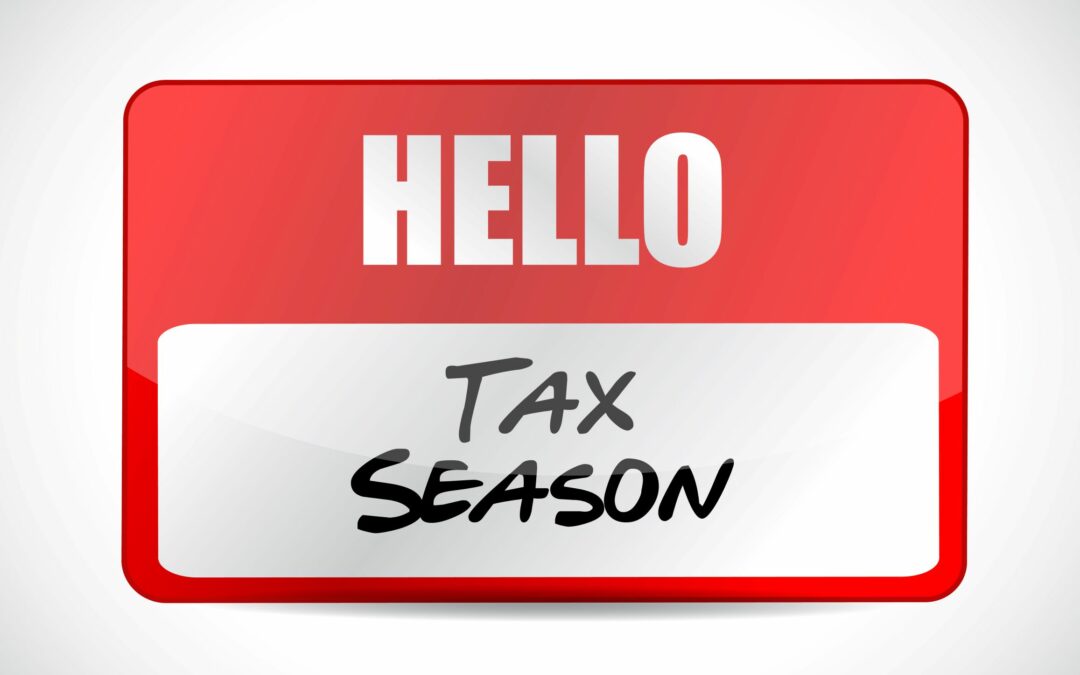The excitement of a new year always brings along tax season and another year of thrilling income tax filings! Seriously, while the new year is an opportunity for a fresh start, tax season doesn’t have to be a challenge. Gathering the information required for your federal and state income taxes seems to inevitably become a painstaking event for most. Many people would rather walk on hot coals than gather their year-end tax documents. This leads many to delay this task until the last minute – or even worse – after the deadline. But it does not have to be that way! Just a little attention to detail and proactive planning can go a long way toward expediting the process. This can also alleviate the stress of tax season (and maybe even save you some money)!
Tax Organizers
Most CPA’s have a checklist or an organizer to assist you in preparing for tax season. This reminds you about things from the previous year and prompts you on areas where additional information is needed. At Culpepper CPA, we send every existing client a tax organizer in January of each year. This 7-8 page document gets you started on collecting and organizing your documents for tax season. We design this tax organizer to ensure we account for all of your income, deductions and potential credits. It can also help you consider what documents you need to gather to complete your filing.
If we break down the package, it’s not that time consuming to go through. This tool is actually very valuable in getting you started. The first page of the document is a letter outlining general information along with how and when to get us your documents for the upcoming tax season. The second page is our engagement letter, detailing terms and your acknowledgement requesting that we prepare your tax returns. This page only requires a signature. The next section is four pages of questions. These questions alert you to information we would need to properly file your tax returns. The last section includes two pages of information for you to confirm or update (marital status, address, changes to bank information, changes in dependents, and other personal filing information).
With the organizer in hand, you can start collecting the items required to file your tax return. Most of these should arrive by early February. Simply be on the lookout for them in the mail or, in most cases, they are available for download online. The easiest way to make sure you have everything you need for tax season is to look at your tax filing in three categories: Reportable Income, Allowable Deductions, and Potential Credits.
Reportable Income
Wage and Self-Employment Income
The first and most common income is your employment earnings, reported by your employer on Form W-2 “Wage and Tax Statement”. The IRS and Social Security Administration require your employer to issue the W-2 by January 31.
In the case of self-employed individuals, a Form W-2 would not apply. This is where you hopefully kept track of revenues and expenses throughout the year, using software or a ledger system. If you are a true procrastinator and have not kept track, have no fear! We can help by gathering bank and credit card records, along with any Forms 1099-NEC “Nonemployee Compensation” you received. If you don’t keep good records, we highly encourage you to maintain separate bank accounts for business activities. This keeps your personal activities separated. Better yet, hire a professional!
Rental Income
Gathering the necessary information for rental properties is much like self-employment income. You will need details regarding rents received and expenses incurred. Expenses could include things like utilities, property taxes, HOA dues, mortgage interest, and any repairs or improvement costs. If you purchased a new property, the closing statement outlining the purchase price and other costs is also necessary.
If you have commercial rent, you will likely receive a 1099-MISC “Miscellaneous Information” reporting the rent paid by your tenant. The 1099-MISC will also report royalty payments, payments to attorneys, and other income impacting your overall taxable income. These forms are also due by January 31 to coincide with the 1099-NEC deadline.
Investment Income
Interest, Dividends and Capital Gains are all reported by banks and brokerage houses on various forms 1099. These include Form 1099-INT for Interest income, Form 1099-DIV for Dividends, and Form 1099 Consolidated Tax Statement – which will report the interest, dividends and capital gains for assets held by brokerage accounts. There are a myriad of other Forms 1099, most of which will be mailed or uploaded to your brokerage account. Payers must postmark these forms by February 15, so you will typically see these documents by the end of February. It’s important to note, however, that many of these Form 1099 Consolidated filings are reissued as “corrected” in early April. Thus, it’s usually a good idea to file for an extension if you have any stock or dividend activity. That helps alleviate the need for filing an amended tax return.
Retirement Income
Retirement income is also reported in January on Form 1099-R “Distribution from Pensions, Annuities, Retirement or Profit-Sharing Plans, IRAs Insurance Contracts, Etc.” Basically, any form of payment through an established retirement program is reportable income. If you collect Social Security Benefits, you will receive a Form SSA-1099 “Social Security Benefit Statement.” Payers will typically mail these forms in late January, and many – including the SSA-1099 – can be accessed online.
Pass-through Income
If you have ownership in partnerships or S-Corporations, the last document you will likely receive is a Schedule K-1. This form reports the income or loss from these business activities. In many cases these documents are not available until as late as September, requiring you to file for a federal tax extension.
Other Income
While the above includes most of the standard types of income, there are various other forms that may apply. These can consist of gambling winnings, cryptocurrency transactions, sale of personal residence or other property, etc. You must report all of these items of income to the Internal Revenue Service on your annual tax filing. With all of your income documents identified and organized, you can turn your attention to potential itemized deductions.
Allowable Deductions
In 2018, the Tax Cuts and Jobs Act basically doubled standard deduction, with the intent to do basically two things. First, it gave a significantly larger deduction to those taxpayers that were already taking the standard deduction. In addition, it limited the amount of taxpayers that itemize their deductions. For many taxpayers, this reduced the number of deductions to account for and simplified filings. The standard deduction for 2022 is $25,950 for joint returns and $12,950 for single filers. Additional amounts apply for those over age 65 or blind. This means that, unless your itemized deductions exceed $25,950 ($12,950 for single filers), the standard deduction will apply.
What are “allowable deductions”? These primarily include medical and dental expenses, certain taxes paid, mortgage interest, charitable contributions, and casualty or theft losses.
Medical Expenses
The medical deduction is basically the cost that you pay for health insurance, dental insurance, and medical and dental procedures. It does not include items paid by your employer or insurance provider. The are additional limits to this deduction based on your income. Only those qualified medical deductions in excess of 7.5% of your Adjusted Gross Income are deductible. For example, if your adjusted gross income for 2022 was $100,000, then the first $7,500 of medical costs are disallowed. In this case, a household with $10,000 of medical and dental deductions would be allowed an itemized deduction of $2,500. For this reason, medical and dental expenses are typically only deductible by those with lower incomes and/or higher medical expenses.
Taxes Paid
The deduction for taxes is primarily for state and local taxes you paid and is capped at $10,000. In Tennessee, because there is no individual state income tax, this typically consists of property taxes and sales taxes paid. Again, it is important to note, even if you have paid property taxes and sales taxes totaling $15,000 or more, the $10,000 deduction limit applies.
Mortgage Interest
The mortgage interest deduction is the easiest to ascertain, as you will receive a Form 1098-MIS “Mortgage Interest Statement” from your lender outlining the interest paid during the year. While there isn’t necessarily a limit on the amount of interest you can deduct, there are still limitations that apply. First, to be deductible, the mortgage loan must be related to costs to buy, build, or substantially improve your home. This means no interest deduction related to funds from home equity loans or lines of credit used to finance a vacation or payoff a credit card. Your primary home or a second residence also must secure the loan. Lastly, there’s a limit on the amount of debt you can treat as qualified home acquisition indebtedness. Mortgages secured between October 13, 1987 and December 15, 2017 are limited to $1,000,000; mortgages secured after December 15, 2017 are limited to $750,000.
Charitable Contributions
Charitable contributions are the last main type of itemized deduction. These consist of donations made in the form of cash or property. In most cases, the donee will provide a receipt to the donor listing the amount of the deductible contribution. For contributions of property over $500, you will need documentation to support the gift, including the date, description, and value of the gift. Gifts of property valued over $5,000 will require special documentation.
While there are other types of itemized deductions, the above comprise the majority that normally apply. Going back to the standard deduction of $25,950 (or $12,950 for single filers), you can see that – with the $10,000 limit on the deduction of state and local taxes – it takes a fairly large amount of combined charitable contributions, mortgage interest, or medical expenses in order to exceed that standard deduction and, instead, itemize your deductions.
Potential Credits
The list of potential credits is exhaustive, but most are relatively obscure. The main ones to consider are child tax credits, childcare credits, solar energy or other energy credits, education credits and electric vehicle credits (for those that still qualify). Credits differ from deductions, working more like a tax payment. They directly reduce your income tax liability dollar for dollar. For childcare credits, your childcare provider will need to provide you with their EIN/SSN, name, and amount paid. With education credits, the institution issues Form 1098-T “Tuition Statement” outlining tuition paid and any scholarships received. For most other credits, you must gather the information on the amounts paid and, in the case of vehicle credits, the VIN to confirm qualification.
Conclusion
Preparing to have your tax returns filed is much easier than it sounds. Simply using your tax organizer assists with collecting all appropriate documents and advising your tax preparer of any changes or updates that occurred in the tax year. From there, trust the professionals to help you fill in any gaps that may exist. Our experienced staff of professional Certified Public Accountants can assist you every step of the way. Check off a New Year’s resolution this year! Complete your tax organizer and turn over your documents to the trusted team at Culpepper CPA this tax season!


